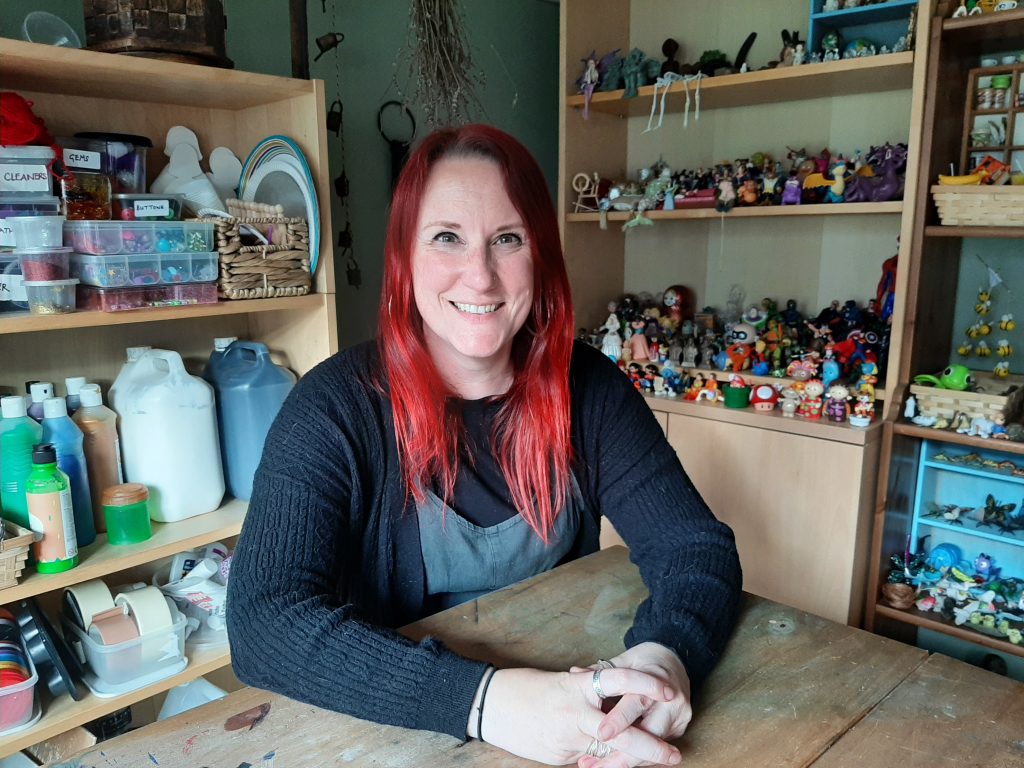Tips for aspiring art therapy authors
Article

Overcoming anxiety and imposter syndrome
Overcoming the anxiety of submitting a first academic paper seems to be a regular experience for our prize winners.
Rachel Preston won the New Practitioner Prize in 2019 after being encouraged by her university lecturers. “Even so, I struggled to overcome my feelings of inadequacy, only deciding to submit the paper at the latest date” she says. “Winning the prize has provided me with a sense of achievement and validation that I have not previously experienced.” After winning the prize, Rachel shared her battles with ‘imposter syndrome’ to encourage others to start writing.
Kim, who won the Early Career Researcher Prize in 2023 also admits that, “having the article accepted for the journal is a huge privilege but I feel self-conscious knowing so many people can see what I have written.” However, she says, “I learnt so much about preparing research for a journal and would actually be tempted to do it again.”
How would your paper help develop effective art therapy?
Papers can be on any topic relevant to art therapy practice and research. But judges will be looking for papers that contribute to the development of effective art therapy for service users.
Kim’s research examined how art therapists reflect client artwork and art-making in clinical notes. She says, “it’s research I would have found useful, especially when I was training, so I hope other art therapists and trainees will benefit from it.”
It will be a work-in-progress
“My advice to anybody thinking of having a go is: don’t be daunted by the idea of having to write something that is perfectly ready for publication” says Jess, who won the New Practitoner Prize in 2023.
“Prize-winners are assigned a mentor who supports, advises and encourages. You get a list of comments from the judges and then there is another round of peer-reviewing, so there is plenty of time and help to think more deeply and refine your first draft.”

Make sure to follow the template and requirements
While your first draft won’t be expected to be perfectly ready for publication, it will need to follow the template and instructions, and it will be judged on its quality and how well it meets the requirements.
Kim says that she, “had to reduce the word count and make sure it fitted the template, but the process wasn’t too painful!”
Make sure you know what your paper will be judged on. Criteria includes quality of writing, your referencing, and how much further work the paper would need to be ready to be published.
Consider writing a Spotlight article
If you want to contribute to the profession by writing about the work of art therapists, but don’t feel ready to submit an academic paper, you could consider writing a Spotlight article for InSight.
Our Spotlight articles shed a light on the different contexts art therapists work in. It’s an important way to share with a wider audience what art therapy is and how it helps people.
We’re looking for art therapists to share how their work is benefitting people in a particular setting or context.
Give it a go, you will learn in the process
Jess says, “I very nearly didn’t enter the competition – why add more to my already heavy workload? – but I am so glad that I did. It’s a great way to dip a toe into the world of academic writing – like riding a bike with training wheels.”
Her final bit of advice is: “If you are thinking of writing something for the next competition, just do it! Even if you don’t win, you’ll learn so much from the challenge.”
Thinking of entering?
To enter the New Practitioner Prize you must be enrolled on an art therapy masters or within 3 years of graduation.
For the Early Career Researcher Prize, you must be enrolled on an MA /MSc /MRes /MPhil /PhD or within 3 years of graduation.
You can find all of the information you need on the journal’s website.

